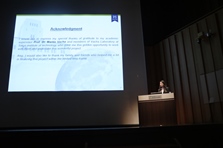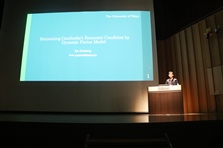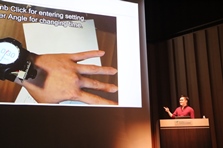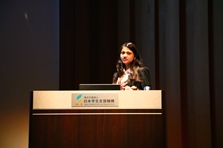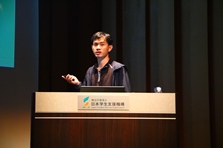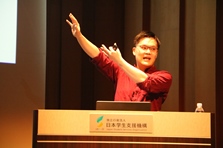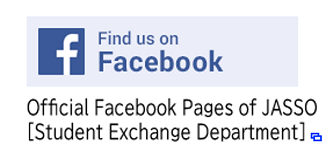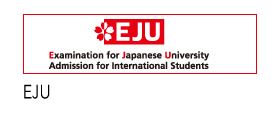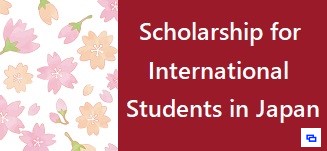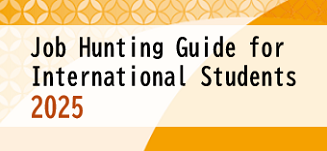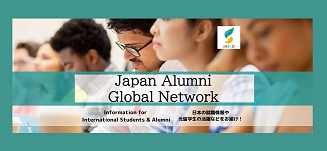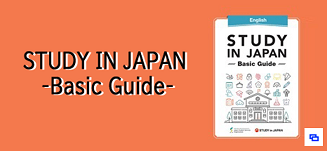|
|
|
|
This event is implemented for promoting interaction among participants and forming intellectual networks.
TIEC residents introduced what they study at thier university or institute through Oral Presentation.
*This time, we held the event without audience due to COVID-19. We took a video of the event and published it on our YouTube channel "TIEC&HIH channel" for a period of time.
1. Date and Time
Sunday, August 2, 2020
14:00pm-15:05pm
2. Venue
International Conference Hall, Plaza Heisei 3F,
Tokyo International Exchange Center (TIEC),
2-2-1 Aomi, Koto-ku, Tokyo
3. Program
1. Opening address
Mr. Toshio Yoshino
Vice President, Japan Student Services Organization / Superintendent, Tokyo International Exchange Center
|
|
I am Yoshino, Vice President of Japan Student Services Organization and Superintendent of Tokyo International Exchange Center, TIEC.
We have held The TIEC Research and Presentation 67 times since we started in 2003.
The 67th Research and Presentation marks the first time as an online event.
As you all know, the whole world is being suffered by COVID-19 pandemic and Tokyo is no exception.
We must take self-measures to prevent the infection.
The Research and Presentation under ordinary circumstance has been held with many audiences in The International Conference Hall including the residents of TIEC.
This time, however, we held the event without audiences and published the videos in this page.
I would like to express my deep appreciation to those who gave the presentations in this event in spite of all the changes.
TIEC is home to approximately 1,000 students, researchers and their families from 80 countries including Japan.
TIEC holds numerous international exchange events such as international symposiums and international festivals to foster international intellectual exchange among the residents.
The Research and Presentation offers an opportunity to present research outcomes beyond the universities and organizations residents belong to and is held for the purpose of facilitating intellectual networking and research exchange among the residents.
While we held this event as online event this time, I sincerely wish peaceful and ordinary times will return to the whole world soon so that we can hold international events or we can meet one and another without hesitation.
In the meantime, I hope that more people will learn about TIEC and will find interests in international exchange through this online event.
Lastly, questions and comments are welcome on our page, please send us comments or questions after watching the presentation and join us in The Research and Presentation.
Please enjoy the presentations.
Thank you.
2. Oral Presentation
(1) Ms. Anubha Agarwal
(India / Tokyo Institute of Technology)
|
|
Presentation Title: Study of electroluminescence and photophysical properties of halide perovskite nanocrystals on single-particle level
Comment: My study is based on perovskite solar cell using spectroscopy for advance study of solar energy in photovoltaic devices.
(2) Mr. Sa Kimleng
(Cambodia / The University of Tokyo)
|
|
Presentation Title: Estimating Cambodia's economic condition by dynamic factor model
Comment: I hope everyone to be healthy during this period. Welcome to TIEC!!!
(3) Mr. Wu Erwin
(Germany / Tokyo Institute of Technology)
|
|
Presentation Title: Back-Hand-Pose: 3D Hand Pose Estimation for a Wrist-worn Camera via Dorsum Deformation Network
Comment: This project introduce a new wearable interface using the techniques of computer vision, which developed a new deep neural network to estimate hand pose only from the information on the back of the hand. This work was mainly done during my visit at CMU this year January, it is already accepted to the international conference ACM UIST 2020 and will be published in October. Since it is a pre-release of that paper, it might be different from the final published version. Please refer the final presentation in the conference for a more detailed and precise information of this work. If you have any question or comments for this research, feel free to contact me at: wu.e.aa at mark m.titech.ac.jp (Please convert "at mark" to @ when you send an e-mail to him)
4. Q&A
Regarding questions to the presenters and the answers to the questions, please refer to the file below.
*Currently, new questions are not available.
Awards for Good Question
|
|
2 people who asked especially good questions received the prize.
(1) Anonymous (Japan / Employee ・ Public servant (including exective, director))
Question to Ms. Anubha Agarwal:
(Tentative translation) What material did you use as the sample in your experiment? And why did you choose that material as a sample?
Answer from Ms. Anubha Agarwal:
(Original sentence) I used a Lithium and Non lithium Based quantum dot as a sample material. I chose this material because this materials behave like perovskites nano crystals and by studing these materials, I could check against my setup whether it is working properly or not.
(2) Ms. Xu jiayao (China / Graduate student)
Question to Mr. Wu Erwin:
(Original sentence) Your work is very interesting. You introduced in your presentation that if the test hand shakes too fast and makes the camera shaking, the failure case will arise. My question is if the hand is still shaking fast, but we assure that the camera is not moved, like putting the hand on the table, and shaking the figures, what will happen? The other question is, your work has only 5 males to do the test, if we find some very fat or very thin people to do this test, will the Back-Hand-Pose still be monitor?
Answer from Mr. Wu Erwin:
(Original sentence) Thank you for your 2 questions. For the first one, when fix your hand on a table or elsewhere stable, I believe the result will be slightly better. However, it also depends on the camera specs since fast motion will anyway cause motion blur which will make the motion history image much more noisy. In case we have a very high speed camera and assume our network works in real-time, I think your statement is true. For the second one, yes in this study we only gather 5 participants and 4 of them were from asia, so it is difficult to claim that the system could generalize over all people. However, among them, one person who has very thick hair on the back of the hand still works quiet good. Anyway we hope to collect data as well as perform study to various people, maybe after the corona pandemic :).
5. Viewing fee
Free
*Everyone can view the videos
6. Language
Japanese and English (Original voice and simultaneous interpretation voice)
- Back number
-
- The 76th Research and Presentation by TIEC Residents【Participants Wanted】
- The 75th Research and Presentation (ONLINE) by TIEC Residents
- The 74th Research and Presentation(ONLINE)by TIEC Residents
- The 73rd Research and Presentation (ONLINE) by TIEC Residents
- The 72nd Research and Presentation (ONLINE) by TIEC Residents
- The 71st TIEC and The 17th HIH Research and Presentation (Global Understanding Workshop)
- The 70th Research and Presentation (ONLINE) by TIEC Residents
- The 69th Research and Presentation (ONLINE) by TIEC Residents
- The 68th Research and Presentation (ONLINE) by TIEC Residents
- The 67th Research and Presentation (ONLINE) by TIEC Residents
- The 66th Research and Presentation by TIEC Residents(January 18th, 2020)
- The 65th Research and Presentation by TIEC Residents
- The 64th Research and Presentation by TIEC Residents
- The 63rd Research and Presentation by TIEC Residents
- The 62nd Research and Presentation by TIEC Residents
- The 61st Research and Presentation by TIEC Residents
- The 60th Research and Presentation by TIEC Residents
- The 59th Research and Presentation by TIEC Residents
- The 58th Research and Presentation by TIEC Residents
- The 57th Research and Presentation by TIEC Residents
- The 56th Research and Presentation by TIEC Residents
- The 55th Research and Presentation by TIEC Residents
- The 54th Research and Presentation by TIEC Residents
- The 53rd Research and Presentation by TIEC Residents
- The 52nd Research and Presentation by TIEC Residents
- The 51st Research and Presentation by TIEC Residents
- The 50th Research and Presentation by TIEC Residents
- The 48th Research and Presentation by TIEC Residents
- The 47th Research and Presentation by TIEC Residents
- The 46th Research and Presentation by TIEC Residents
- The 45th Research and Presentation by TIEC Residents
- The 44th Research and Presentation by TIEC Residents
- The 43rd Research and Presentation by TIEC Residents
- The 42nd Research and Presentation by TIEC Residents
- The 41st Research and Presentation by TIEC Residents
- The 40th Research and Presentation by TIEC Residents
- The 39th Research and Presentation by TIEC Residents
- The 38th Research and Presentation by TIEC Residents
- Contact
-
- Strategy Planning Unit, Student Exchange Programs Planning Division, Student Exchange Department, Japan Student Services Organization
-
- TEL 03-5520-6012
- E-mail tiecproject at mark jasso.go.jp
- Please convert "at mark" to @ when you send an e-mail to us.
-
-
-
-

